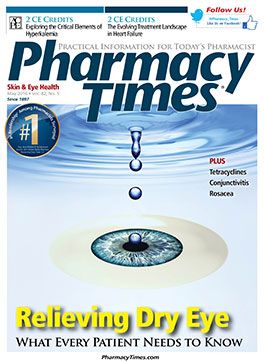Avoid Dispensing Unmixed Powder for Oral Suspension
The Institute for Safe Medication Practices has received numerous reports involving the dispensing of unmixed oral suspensions, particularly unmixed antibiotics, to patients.
The Institute for Safe Medication Practices has received numerous reports involving the dispensing of unmixed oral suspensions, particularly unmixed antibiotics, to patients. Most of the cases have involved pediatric patients who received overdoses of antibiotics when their parents administered the unmixed drug powder to the children. The community pharmacies involved had failed to mix the antibiotics before dispensing them.
In one case, a pharmacy dispensed unmixed amoxicillin powder for a young boy. The child’s father measured and administered 9 mL of the powder before realizing that it was unusual to have not received a liquid medication. It was determined that the child ingested 9 g of unmixed amoxicillin powder instead of 450 mg of the mixed suspension.
In another case, an 8-month-old girl was prescribed amoxicillin/clavulanate potassium (AUGMENTIN) suspension to treat an ear infection. The prescription was taken to the family’s local community pharmacy, which dispensed a stock medication bottle labeled with instructions to give the child a half teaspoonful twice daily by mouth. When the family arrived home, they measured a half teaspoonful of the powder and administered it to the girl. The girl was rushed to the emergency department, where she was treated for the antibiotic overdose.
More recently, a pharmacist reported that azithromycin 100 mg/5 mL for oral suspension was prepared by a pharmacy technician who affixed the pharmacy label to the outer carton. The pharmacist who checked the prepared prescription did not open the carton to look at the bottle itself or check that the medication had been reconstituted. Thankfully, in this case, the mother caught the mistake when she got home and returned the product to the pharmacy before administering any drug to her child.
Dispensing an unmixed medication is an error that should never occur if you have multiple strategies in place. Evaluate the safeguards you currently have in place and consider the following risk-reduction strategies:
- Add a note or label to the prescription receipt indicating that the product needs to be mixed prior to dispensing. One suggestion we have received is to place these products in a clear plastic bag with a label stating “NEED TO MIX” stapled to the outside of the paper bag. Another possible process is to place the pharmacy receipt, stapled to a brightly colored card labeled “NEEDS TO BE MIXED,” in a clear plastic bag, but without the medication container.
- Place the actual product container that requires mixing in a separate area. After the product is reconstituted, the product should be given to the pharmacist, along with any other prescriptions, to counsel the patient on how to measure the medication.
- Include specific product descriptions on the prescription label (eg, orange-flavored, white, opaque liquid) that will cue it is an oral, liquid product.
- At the point-of-sale, open the bag and review the label, route of administration, storage requirements, and directions for use with the patient. Shake the bottle to demonstrate how to mix the suspension prior to administration. Open the bottle with the patient and/or caregiver to check the contents.
- Investigate ways to leverage point-ofsale technology to alert staff to check that prescriptions for drugs that require reconstitution have been mixed.
- Ensure that oral syringes or other appropriate measuring devices, which correspond to the instructions on the label, are provided with the product.
- Provide education to patients and caregivers regarding proper use and cleaning of the measuring device.
- To validate learning, have the caregiver or patient demonstrate how to measure and administer the dose.
- Review, with your entire staff, what strategies you have in place to prevent this error.
Dr. Gaunt is a medication safety analyst and the editor of ISMP Medication Safety Alert! Community/Ambulatory Care Edition.

